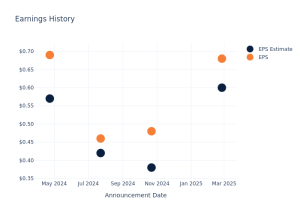
The U.S. labor market continues to exhibit signs of strength, with initial jobless claims falling sharply for the week ending Oct. 19. The number of individuals filing for unemployment benefits dropped more than expected, signaling a robust job market as Americans approach a presidential election in less than two weeks.
Jobless Claims Slow
Initial jobless claims came in at 227,000 last week, a decline of 15,000 from the previous week. This marked the largest week-over-week drop since August 2024 and came in below economist forecasts of 242,000. The sharp decline is a sign that fewer Americans are being laid off, further reflecting the labor market’s resilience.
The four-week moving average for initial claims, which helps smooth out volatility, rose slightly to 238,500, up from 236,500 the previous week. This marked the highest level since early August.
A less optimistic signal flashed in continuing jobless claims — a metric that tracks the number of people still receiving unemployment benefits after an initial filing.
For the week ending Oct. 12, continuing claims increased to 1.897 million, up from 1.869 million in the previous week. This is the highest level seen since mid-November 2021 and significantly higher than the expected 1.880 million, suggesting that some individuals are finding it harder to transition back into employment.
Economist Insights: What Does It Mean?
Michael Gayed, CFA, anticipated on Wednesday that the U.S. labor market remains incredibly tight, a factor that could have wider economic implications. “The labor market is at a level that the central bank has traditionally called full employment,” Gayed said.
“That’s good for growth, and I think that’s generally being reflected in forward-looking GDP forecasts, but it also creates another set of problems. We may be seeing yields rise as investors remain risk-on and the negative correlation between stocks & bonds returns. But I also think it has a lot to do with inflation risk,” he added.
Gayed also indicated the current environment of solid growth, a tight labor market and greater liquidity is likely contributing to upward pressure on interest rates.
“Fiscal and monetary conditions could ignite a further boom in risk asset prices, but subsequent inflation and negative credit conditions could still usher in the big credit event after that.”
Market Reactions
U.S. equity markets reacted positively to the latest labor market data in premarket trading on Thursday. Futures on the S&P 500 climbed 0.5% by 8:45 a.m. in New York, signaling a potential rebound after Wednesday’s losses.
On Wednesday, the S&P 500, as tracked by the SPDR S&P 500 ETF Trust SPY, declined by 0.9%, marking the third consecutive day of losses.
Contracts on the Nasdaq 100 surged 0.9%, driven by strong earnings from Tesla, which helped buoy the tech-heavy index. The EV giant was up 15%. Futures on the Dow Jones Industrial Average were relatively flat.
In the currency markets, the U.S. Dollar Index (DXY), which measures the dollar’s strength against a basket of other currencies and is tracked by the Invesco DB USD Index Bullish Fund ETF UUP, weakened slightly by 0.2%,
In the bond market, Treasury yields softened slightly on Thursday, with the 10-year Treasury yield falling to 4.22%, though yields remained elevated for the week.
Gold prices, as tracked by the SPDR Gold Trust GLD, rebounded 0.9%, after dropping 1.2% in Wednesday’s trading.
Read Next:
Photo via Shutterstock.
Market News and Data brought to you by Benzinga APIs
© 2024 Benzinga.com. Benzinga does not provide investment advice. All rights reserved.

